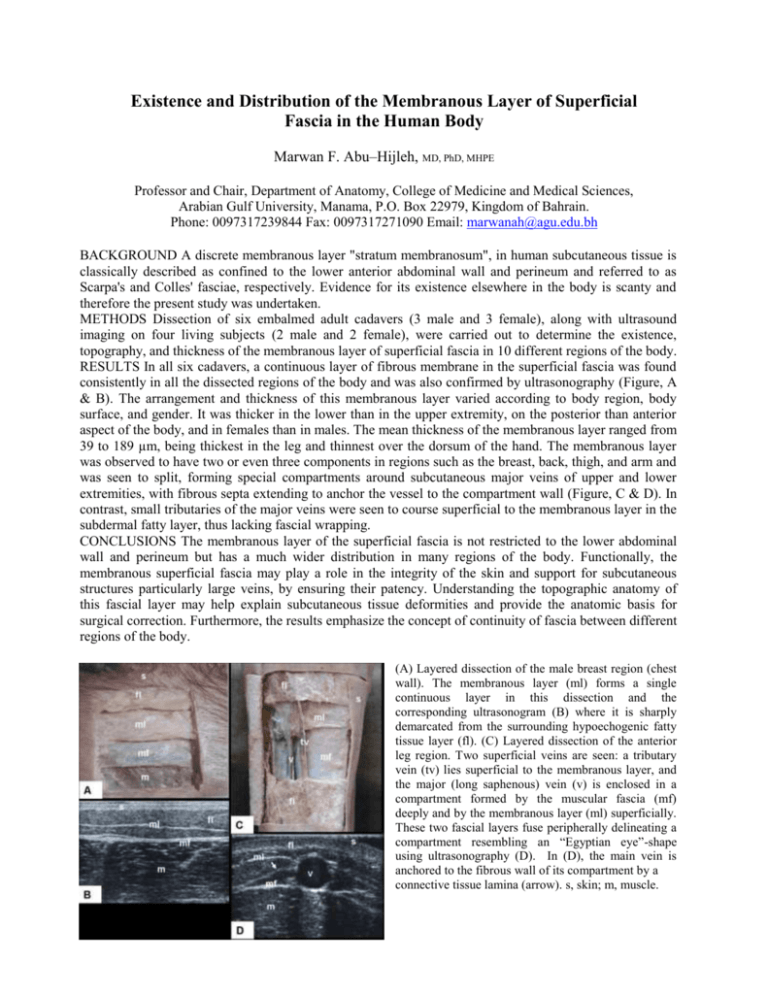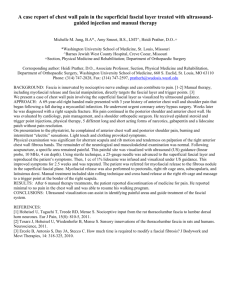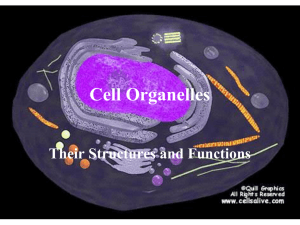Existence and Distribution of the Membranous Layer of Superficial
advertisement

Existence and Distribution of the Membranous Layer of Superficial Fascia in the Human Body Marwan F. Abu–Hijleh, MD, PhD, MHPE Professor and Chair, Department of Anatomy, College of Medicine and Medical Sciences, Arabian Gulf University, Manama, P.O. Box 22979, Kingdom of Bahrain. Phone: 0097317239844 Fax: 0097317271090 Email: marwanah@agu.edu.bh BACKGROUND A discrete membranous layer "stratum membranosum", in human subcutaneous tissue is classically described as confined to the lower anterior abdominal wall and perineum and referred to as Scarpa's and Colles' fasciae, respectively. Evidence for its existence elsewhere in the body is scanty and therefore the present study was undertaken. METHODS Dissection of six embalmed adult cadavers (3 male and 3 female), along with ultrasound imaging on four living subjects (2 male and 2 female), were carried out to determine the existence, topography, and thickness of the membranous layer of superficial fascia in 10 different regions of the body. RESULTS In all six cadavers, a continuous layer of fibrous membrane in the superficial fascia was found consistently in all the dissected regions of the body and was also confirmed by ultrasonography (Figure, A & B). The arrangement and thickness of this membranous layer varied according to body region, body surface, and gender. It was thicker in the lower than in the upper extremity, on the posterior than anterior aspect of the body, and in females than in males. The mean thickness of the membranous layer ranged from 39 to 189 µm, being thickest in the leg and thinnest over the dorsum of the hand. The membranous layer was observed to have two or even three components in regions such as the breast, back, thigh, and arm and was seen to split, forming special compartments around subcutaneous major veins of upper and lower extremities, with fibrous septa extending to anchor the vessel to the compartment wall (Figure, C & D). In contrast, small tributaries of the major veins were seen to course superficial to the membranous layer in the subdermal fatty layer, thus lacking fascial wrapping. CONCLUSIONS The membranous layer of the superficial fascia is not restricted to the lower abdominal wall and perineum but has a much wider distribution in many regions of the body. Functionally, the membranous superficial fascia may play a role in the integrity of the skin and support for subcutaneous structures particularly large veins, by ensuring their patency. Understanding the topographic anatomy of this fascial layer may help explain subcutaneous tissue deformities and provide the anatomic basis for surgical correction. Furthermore, the results emphasize the concept of continuity of fascia between different regions of the body. (A) Layered dissection of the male breast region (chest wall). The membranous layer (ml) forms a single continuous layer in this dissection and the corresponding ultrasonogram (B) where it is sharply demarcated from the surrounding hypoechogenic fatty tissue layer (fl). (C) Layered dissection of the anterior leg region. Two superficial veins are seen: a tributary vein (tv) lies superficial to the membranous layer, and the major (long saphenous) vein (v) is enclosed in a compartment formed by the muscular fascia (mf) deeply and by the membranous layer (ml) superficially. These two fascial layers fuse peripherally delineating a compartment resembling an “Egyptian eye”-shape using ultrasonography (D). In (D), the main vein is anchored to the fibrous wall of its compartment by a connective tissue lamina (arrow). s, skin; m, muscle.









